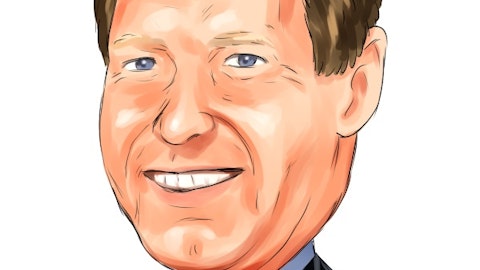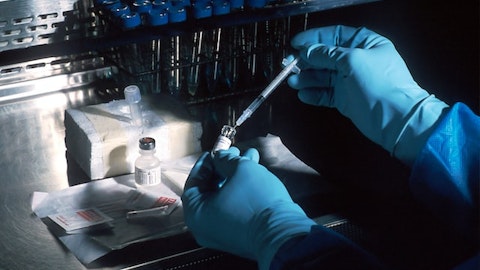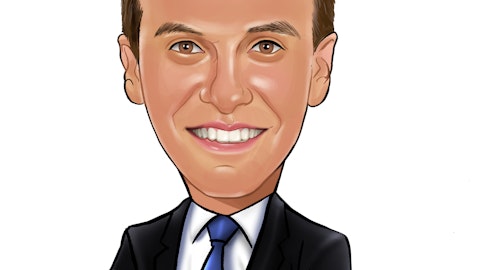They want to get full dose immediately upon treatment initiation. So there’s a subset that will likely not going to start with a reduced dose. Number two, we do have some physicians in the community that have dealt with neratinib for a long time that do not have challenges managing diarrhea, and they’ve got their own way of dealing with it. And so they start with full dose and if they have a challenge, they dose reduce. The third situation is we believe the numbers that I’m showing you, although that methodology is very consistent, it really undercalls the complete adoption of dose escalation. We pull that data from our SP channel, which, as I mentioned before, is about 80% of our business, so it’s a very good surrogate. We do not have visibility into the SD channel.
And so for example, if a patient starts in the SD portion of the business, it’s not uncommon for them to fill one time in the SD channel and then move over to the SP channel for their second and subsequent fields. In that example, if the patient starts in dose escalation in the SD when they come over to the SP, it’s likely they’ll come at full dose, and we’ll pick that up as a full dose start, even though they started on a low dose. So these numbers, we believe, are very conservative. And quite honestly, I’m very happy with the overall trend. I would guess that the max that we’d ever see, I’m estimating might be 70%, 75%, that would be almost full adoption. So hopefully, that helps and add a little more color.
Alan Auerbach: And then on your second question with regard to the royalty, a large portion of our royalty is the shipments to China. And those can fluctuate largely based on things such as you know, in China, they had the Zero COVID policy. And so a lot of times, it was — we were just waiting for kind of the window to open for us to be able to ship. So that kind of causes that fluctuation in that bumpiness to occur. So that’s largely why you saw the higher than expected in Q4.
Maximo Nougues: Sorry — to add that. Also, we deliver batches, right? So large manufacturing budget that won’t become available when we ship as well. So.
Unidentified Analyst: Okay. Thank you. Very helpful.
Operator: Thank you. Your next question comes from Gena Wang with Barclays. Please state your question.
Unidentified Analyst: Hi. Good afternoon. This is on for Gena. Thank you for taking our questions. A quick one from us. So it’s been over a year since you reduced fuel clinical specialists right, given 50% to 60% of your accounts are through virtual interaction. I was wondering, can you give us an update on how this has been working out? Do you think you need to add back additional specialists? Or are you doing well with the current sales force? Thank you.
Jeff Ludwig: Yes. Harshita, thanks a lot for the question. I appreciate it. A couple of things. One is, as you know, the oncology therapeutic area is a very restricted specialty. It’s more restricted than many other areas. I will tell you that since COVID, it’s become even more restrictive even though we’re seeing some positive trends at some of the COVID offices — obviously opening back up. So I will tell you right now, we feel very good about the size of our sales force. They’re able to cover accounts that are open and accessible, either live or virtual. We monitor that very closely, and I’ve said this on previous calls, if we have an opportunity where we’re not staffed correctly, where we can get in front of more physicians.




